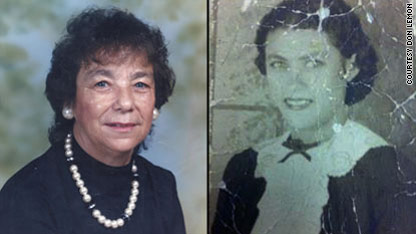Man’s Most Dangerous Myth: The Fallacy of Race (Sixth Edition)Posted in Books, Media Archive, Monographs, Philosophy, Social Science on 2013-04-02 23:55Z by Steven |
Man’s Most Dangerous Myth: The Fallacy of Race (Sixth Edition)
AltaMira Press
1997
704 pages
Cloth ISBN10: 0-8039-4647-3; ISBN13: 978-0-8039-4647-7
Paper ISBN10: 0-8039-4648-1; ISBN13: 978-0-8039-4648-4
Ashley Montagu (1905-1999)
Man’s Most Dangerous Myth was first published in 1942, when Nazism flourished, when African Americans sat at the back of the bus, and when race was considered the determinant of people’s character and intelligence. It presented a revolutionary theory for its time; breaking the link between genetics and culture, it argued that race is largely a social construction and not constitutive of significant biological differences between people. In the ensuing 55 years, as Ashley Montagu’s radical hypothesis became accepted knowledge, succeeding editions of his book traced the changes in our conceptions of race and race relations over the 20th century. Now, over 50 years later, Man’s Most Dangerous Myth is back in print, fully revised by the original author. Montagu is internationally renowned for his work on race, as well as for such influential books as The Natural Superiority of Women, Touching, and The Elephant Man.
This new edition contains Montagu’s most complete explication of his theory and a thorough updating of previous editions. The Sixth Edition takes on the issues of the Bell Curve, IQ testing, ethnic cleansing and other current race relations topics, as well as contemporary restatements of topics previously addressed. A bibliography of almost 3,000 published items on race, compiled over a lifetime of work, is of enormous research value. Also available is an abridged student edition containing the essence of Montagu’s argument, its policy implications, and his thoughts on contemporary race issues for use in classrooms. Ahead of its time in 1942, Montagu’s arguments still contribute essential and salient perspectives as we face the issue of race in the 1990s. Man’s Most Dangerous Myth is the seminal work of one of the 20th century’s leading intellectuals, essential reading for all scholars and students of race relations.
Table of Contents
- Chapter 1 Abridged Student Edition Table of Contents
- Chapter 2 Foreword to the First Edition
- Chapter 3 Foreword to the Sixth Edition
- Chapter 4 Preface to the Sixth Edition
- Chapter 5 Introduction
- Chapter 6 1. The Origin of the Concept of Race
- Chapter 7 2. The Fallaciousness of the Older Anthropological Conception of Race
- Chapter 8 3. The Genetical Theory of Race
- Chapter 9 4. The Biological Facts
- Chapter 10 5. Natural Selection and the Mental Capacities of Humankind
- Chapter 11 6. The Mythology of Race, or “For Whom the Bell Tolls”
- Chapter 12 7. Race and Society
- Chapter 13 8. Biological and Social Factors
- Chapter 14 9. Psychological Factors
- Chapter 15 10. Race and Culture
- Chapter 16 11. Racism and Social Action
- Chapter 17 12. Intelligence, IQ, and Race
- Chapter 18 Unabridged Table of Contents
- Chapter 19 Foreword to the First Edition
- Chapter 20 Foreword to the Sixth Edition
- Chapter 21 Preface to the Sixth Edition
- Chapter 22 Introduction
- Chapter 23 1. The Origin of the Concept of Race
- Chapter 24 2. The Fallaciousness of the Older Anthropological Conception of Race
- Chapter 25 3. The Genetical Theory of Race
- Chapter 26 4. The Biological Facts
- Chapter 27 5. Natural Selection and the Mental Capacities of Humankind
- Chapter 28 6. The Mythology of Race, or “For Whom the Bell Tolls”
- Chapter 29 7. Race and Society
- Chapter 30 8. Biological and Social Factors
- Chapter 31 9. Psychological Factors
- Chapter 32 10. The Creative Power of Ethnic Mixture
- Chapter 33 11. Eugenics, Genetics, and Race
- Chapter 34 12. Race and Culture
- Chapter 35 13. Race and War
- Chapter 36 14. Race and Blood
- Chapter 37 15. Innate Aggression and Race
- Chapter 38 16. Myths Relating to the Physical Traits of Blacks
- Chapter 39 17. Are the Jews a Race?
- Chapter 40 18. The First Americans
- Chapter 41 19. The Meaning of Equal Opportunity
- Chapter 42 20. Race and Democracy
- Chapter 43 21. Racism and Social Action
- Chapter 44 22. Sociocultural Behavioral Influences
- Chapter 45 23. Intelligence, IQ, and Race
- Chapter 46 Appendix A: Ethnic Group and Race
- Chapter 47 Appendix B: The Fallacy of the Primitive
- Chapter 48 Appendix C: The Term Miscegination
- Chapter 49 Appendix D: Intelligence of Northern Blacks and Southern Whites in the First World War
- Chapter 50 Bibliography


